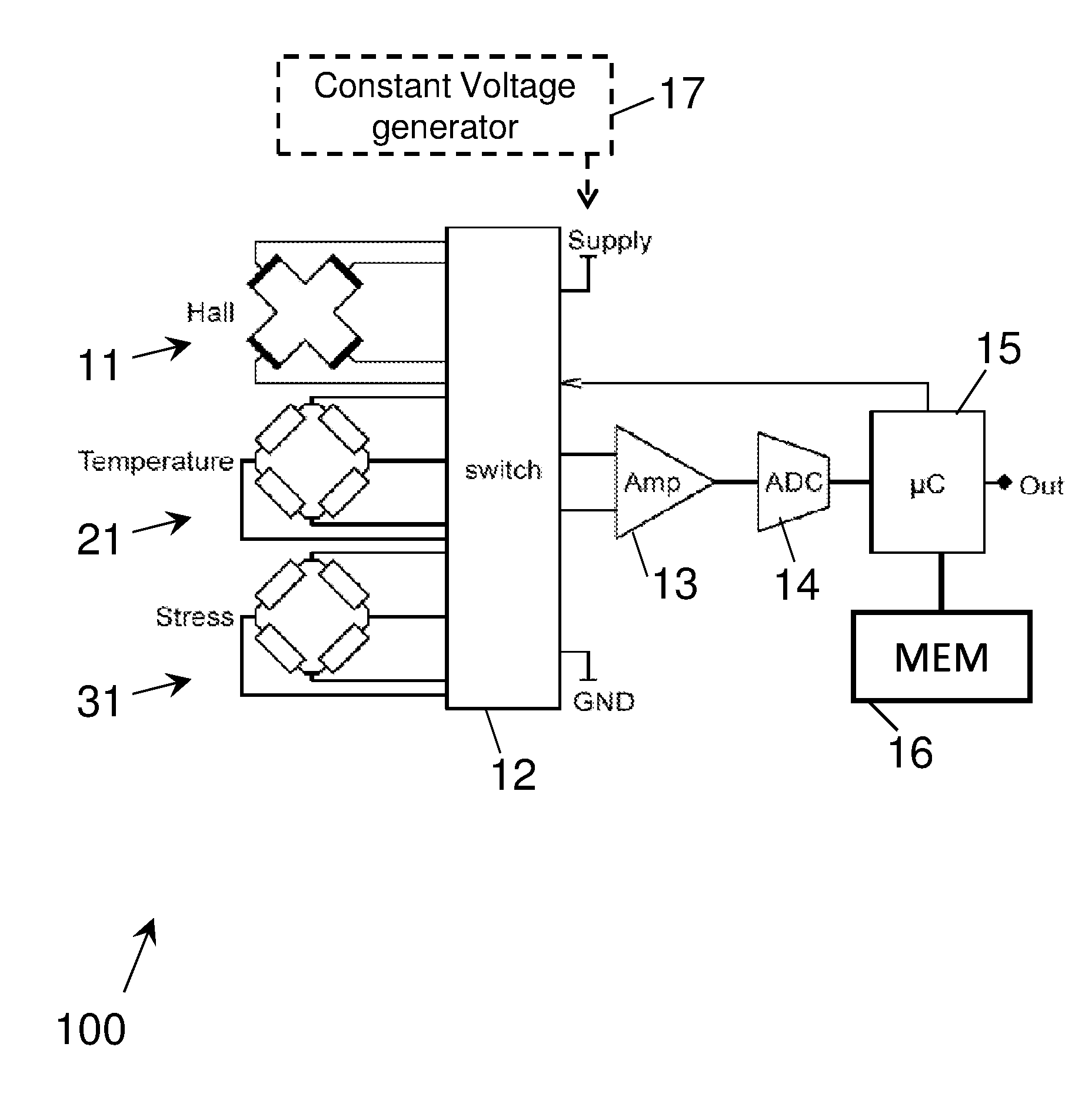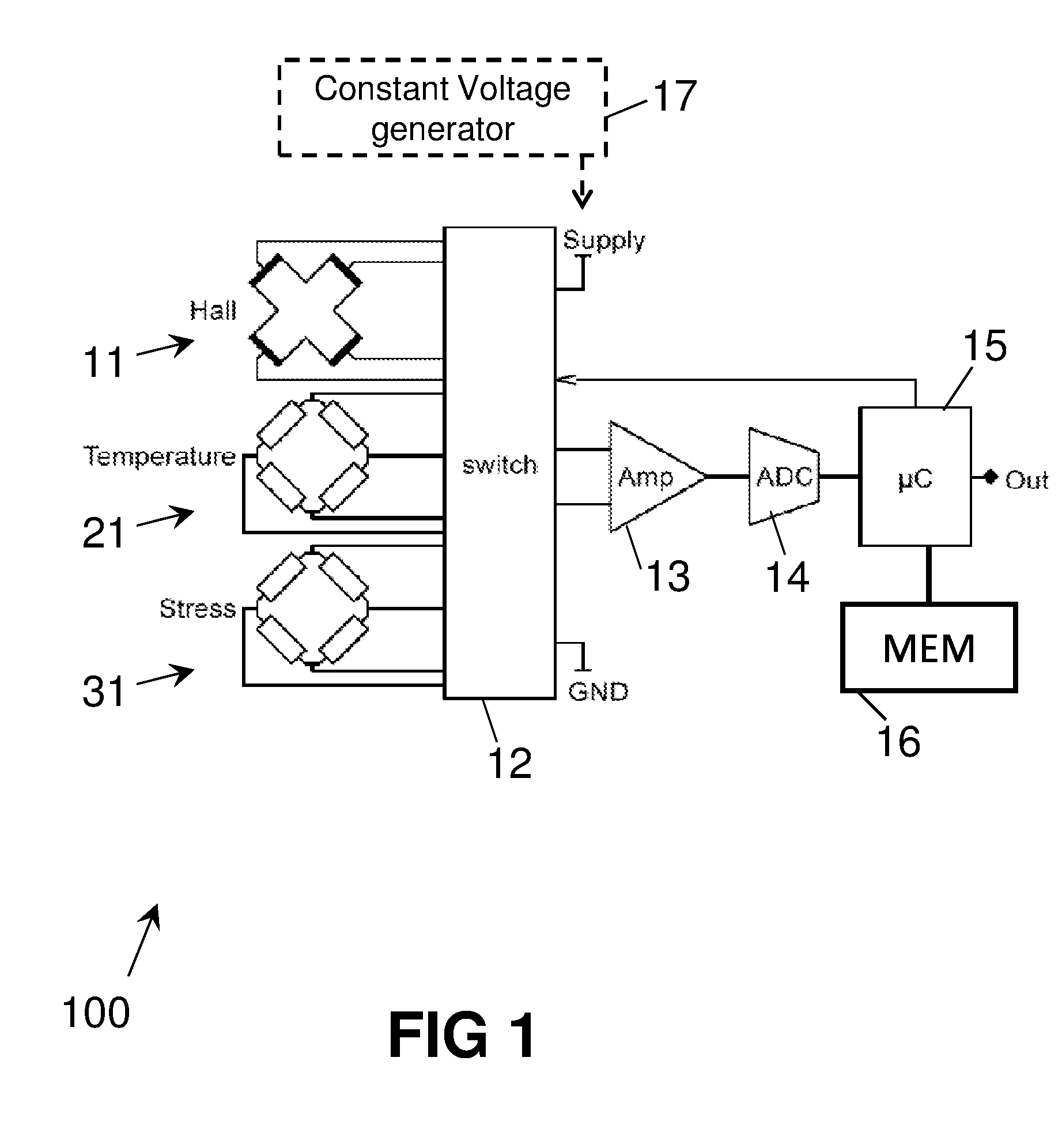Stress and temperature compensated hall sensor, and method
a hall sensor and temperature compensation technology, applied in the field of stress and temperature compensation hall sensors, can solve the problems of inconvenient operation, inability to adjust the temperature of the sensor, etc., and achieve the effect of flexible and accurate, and relatively easy implementation
- Summary
- Abstract
- Description
- Claims
- Application Information
AI Technical Summary
Benefits of technology
Problems solved by technology
Method used
Image
Examples
example 1
[0193]In a first example, the following correction factor CF is used:
CF=(γ00+γ20·Δσisô2+γ11·Δσiso·ΔT+γ02·ΔT̂2+γ10·Δσiso+γ01·ΔT) [23]
As described above, the values of γ00, γ20, γ11, γ02, γ10, γ01, may be determined during production (e.g. after packaging or after probing), and can be stored in a non-volatile memory, physically connectable or physically embedded in the device.
example 2
[0194]In a variant of example 1, some of the coefficients are chosen equal to zero, resulting in less coefficients to be determined and stored, and a simpler formula to be calculated. The correction factor of the second example is:
CF=(γ00+γ11·Δσiso·ΔT+γ02·ΔT̂2+γ10·Δσiso+γ01·ΔT) [24]
example 3
[0195]The third example is actually the same as the second example, but formulated differently. The main reason of this example is to show that the polynomial representation can also be used to represent “coefficients that are temperature-dependent”. The equation [23] can be rewritten as:
CF=(γ00+(γ10+γ11·ΔT)·Δσiso+γ02·ΔT̂2+γ01·ΔT) [25]
or:
CF=(γ00+λ1·Δσiso+γ02·ΔT̂2+γ01·ΔT) [26]
where the value of λ1 is not constant, but is temperature-dependent, and can be stored in the non-volatile memory as a list of values, e.g. representing a piece-wise linear approximation, along with the coefficients γij.
[0196]From this example it shall be clear that the formulation of the correction factor as a polynomial, can thus also represent temperature-dependent coefficients, even though the coefficients γij are constants.
PUM
 Login to View More
Login to View More Abstract
Description
Claims
Application Information
 Login to View More
Login to View More - R&D
- Intellectual Property
- Life Sciences
- Materials
- Tech Scout
- Unparalleled Data Quality
- Higher Quality Content
- 60% Fewer Hallucinations
Browse by: Latest US Patents, China's latest patents, Technical Efficacy Thesaurus, Application Domain, Technology Topic, Popular Technical Reports.
© 2025 PatSnap. All rights reserved.Legal|Privacy policy|Modern Slavery Act Transparency Statement|Sitemap|About US| Contact US: help@patsnap.com



